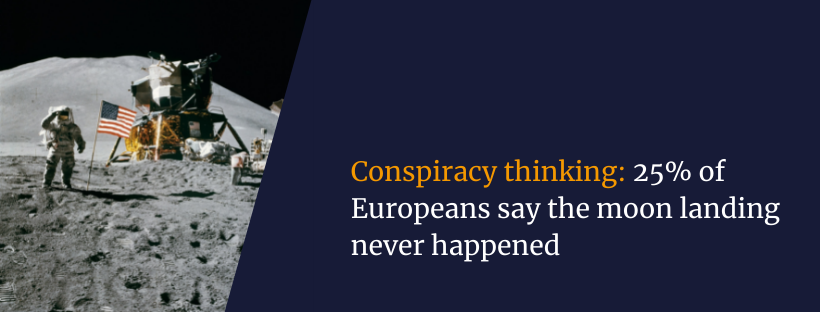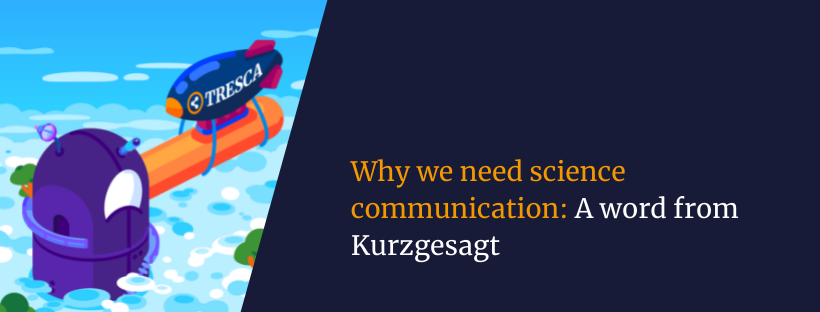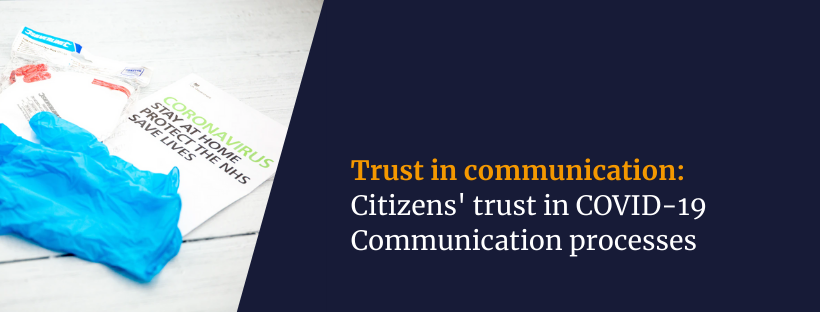Conspiracy thinking: 25% of Europeans say the moon landing never happened
By Richard Hudson, Science|Business A survey by the TRESCA EU research project details how scientific disinformation and misinformation abounds. The group is working on tools to help manage this digital plague of our era. Here’s a quick test: Did man land on the moon in 1969? Or was it a TV studio hoax? Spoiler alert: Of course, the landing really happened. But don’t try telling that to the 25% of Europeans surveyed by the TRESCA EU research project on misinformation. When asked about the landing last year, a fourth of the 7,120 people surveyed in seven countries agreed with a statement that it had all been a hoax. That response may surprise you (assuming you’re among the majority who believe in rockets and astronauts). But In studying European attitudes towards science – and online lies or distortions about it – the TRESCA research team has gotten further confirmation of what social scientists have been observing for years: A not-small portion of the population doesn’t trust authority in general and doesn’t trust scientific authority in particular. And on social media, they spread and reinforce each other’s scepticism. This is no small problem, as we have seen lately with the rise of vocal anti-vaxxers, some of whom promote theories that the COVID-19 vaccines insert microchips in people so the government can spy on them, or that the disease itself comes from 5G wireless transmission towers. Studying how widespread this kind of thinking is online, and what can be done to combat it, is among the goals of TRESCA. The six research partners in the project, funded by the EU’s Horizon 2020 programme, are coordinated by Erasmus University Rotterdam. And they have been surveying citizens on scientific dis- and misinformation, preparing an online training course for science communicators, and prototyping a “misinformation widget” to help individuals to fact-check online information. What they found in the survey, however, is shocking. In February and March 2021, the researchers commissioned a survey in France, Germany, Hungary, Italy, the Northlands, Poland and Spain, reaching more than 7,000 people in all. Among the questions posed was a set about trusting institutions and believing conspiracy theories. Besides the moon landing results, the responses included: 82% agreed that “politicians are frequently bribed by major companies or interest groups.”62% agreed that “much of what happens in the world today is decided by a small and secretive group of individuals.” The results differ by country and age of the respondent. A separate sampling of 1,533 young people from age 16 to 25 in Germany, Spain and the Netherlands found even more doubt the moon landing than does the general, older population: 35%, vs. the average 25%. These findings fit into a disturbingly well-established history of conspiracy thinking. In a separate survey in April and May of 2021, the EU’s statistical agency, Eurostat, found that among the 37,103 people Eurostat it questioned, 28% believe that “the cure for cancer exists but is hidden from the public by commercial interests.” By contrast, 56% say it’s false, and the rest – in Eurostat’s official language -were “unable to express an opinion.” Of course, it’s nice to know the majority don’t buy into that particular conspiracy. Still, it’s a sizeable minority that do. Likewise, 26% agreed that “viruses have been produced in government laboratories to control our freedom.” To both questions, Bulgarians are among those most likely to say yes. And this is far from a uniquely European phenomenon. As far back as 2013, before all the social media alarm bells were ringing, a US survey by Public Policy Polling found that 28% of American voters believe there is a secretive global conspiracy to rule the world. Republicans were twice as likely to believe that and related conspiracy theories than were Democrats: 34% vs. 15%. Indeed, 20% of Republicans surveyed believed that former President Obama was the Anti-Christ. Foolishness? Certainly, but deadly serious for the future of democratic societies. Of course, as is often said, you can’t stop stupid. But we can do a better job in developing tools and methods for managing the spread of such harmful conspiracy theories in our weaponised social media channels. Learn more about the TRESCA research results on 8 February 2022, in a free online session during the Science|Business annual conference. TRESCA researchers and their guests will be online from 15:00 to 15:45 Central European Time. (And you’re welcome to join the rest of the two-day conference on EU research programmes, organised by TRESCA member Science|Business.) More conference information, and registration, here.
Why we need science communication: A word from Kurzgesagt
By Elisabeth Steib and Marc Zwiechowski, KURZ
Kurzgesagt is an animation studio and YouTube channel that specializes in explaining complex scientific topics in illustrated and animated videos. For the TRESCA project, we created a video about science communication and the challenges experts and science communicators face.
Initially, we wanted to talk about a completely different topic. But after working with the TRESCA team, who did some experiments on one of our videos to analyze which aspects influence their trustworthy impression, we realized that the overall subject of the TRESCA project should be our video topic instead:
Why do we need science communication in the first place? What can it and can it not do? And what is it we, as science communicators, struggle with when creating our content: how do we condense complex topics down to the perfect detail level – not too much so it is overwhelming, not so little that we are oversimplifying things? How do we deal with balancing the opinions of experts who do not agree on certain aspects?
The video we created gives some insight into the evolution of our research and our motivation to inspire people to get excited about science and wanting to dig deeper by themselves. See for yourself and check out the video below! https://www.youtube.com/watch?v=XFqn3uy238E
Citizens’ trust in COVID-19 communication processes
By Giuseppe Pellegrini, Observa Science in Society Since the beginning and the spread of the Covid-19 pandemic across the world, it has been clear how a wave of misinformation has spread fake news and hoaxes proven difficult to fight. One of the numerous problems has regarded media and newspapers in particular, unable to communicate in the most comprehensible and concise way fundamental contents to readers. The kind of content that could have led people through fear and uncertainty of the present: uncountable photos, video and articles reported on the media without a proper fact checking have contributed creating a distrust attitude among people. Is this the way journalists and communicators are meant to deal with, in what is probably the most difficult time after since World War II? As pointed out by M. Bucchi, a good emergency and risk communication practice can help society address the “new coronavirus” crisis. Citizens must be able to (easily) find the most important and necessary information updated on official communication channels in an easy (and efficiently) manner (institutional websites of the Ministry of Health and Education or of the Regions, social media platforms etc.) Whose task is this, who has the responsibility to manage the communication at an institutional level? This should / could be emergency and risk communication professionals rather than marketers or press officers. The chosen media doesn’t have to be a personal Facebook page or a twitter account: always go official, institutional. (or: the chosen media to run communication through should not be FB or Twitter, but rather and always through official and institutional platforms) An open eye on what happens in different countries Assessing the current situation: several countries around the world are investigating the perception of public opinion about pandemic communication. What is happening in Sweden is demonstrated through an ongoing VA survey about the public confidence in researchers and public figures. “The ongoing pandemic presents major challenges for society. Communication is a crucial factor in the response to these challenges. Individuals, organisations and countries are all faced with making many decisions based on a limited but growing evidence base.” Fig. 1: VA (Public & Science) is conducting a real-time study, in collaboration with researchers at the Karolinska Institute and Södertörn University to understand how people receive and interpret information about the current pandemic. According to Secretary General of VA (Public and Science), Cissi Askwall “the public has had a great deal of confidence in health care professionals and researchers, and a much lower confidence in politicians and journalists. In Sweden, we also have great confidence in our authorities and public institutions, especially universities and university colleges. […] The ongoing crisis shows that good science communication can make a big difference. I hope this means that communication will be higher on the agenda in the research world in the long term.” A recent survey (April 2020) from Pew Research Center shows how the percentage of Americans who say journalists have exaggerated the risks of the outbreak has decreased notably. Fig. 2: Pew Research Center – Share of Americans saying media have exaggerated the risks of COVID-19 declined from March to April. Italian citizens and COVID-19 information communication Fig. 3: Italian citizens and three attitudes towards COVID-19 communication Thanks to a cluster analysis made on data collected in April by Observa – Science in Society, it is possible to identify and divide in three groups Italian citizens and their actual trust towards information sources: Institutional optimist (43%) – the one that trusts and informs himself/herself mainly through television news and institutional web channels. Considers positively both the communication work of the principal institutions and the role of scientific experts; thinks that effective solutions will soon come from science.Confused (35%) – isn’t able to express an opinion neither on the work nor on the quality of communication by the institutions. Searches for news on the media, from family and friends; the variety of experts drives him/her confused and has no high expectations when it comes to finding pandemic solutions.Social Pessimist (22%) – his/her position about actions and communication by the institutions is mainly negative. He/she relies more on people and social media news about the pandemic and criticizes the way scientists communicate and is pessimistic about a solution against coronavirus in a short time. Concluding, communication surrounding COVID-19 is met with challenges. Bill Hanage and Marc Lipsitch highlight the responsibility of scientists and journalists: “Emergencies like this one lead to extreme pressure on both scientists and journalists to be the first with news. We have a common responsibility to protect public health. The virus does not read news articles and doesn’t care about Twitter.”


